Within the LIFE FOR SPECIES project (Endangered species in Latvia: improved knowledge and capacity, information circulation and understanding) in the period from 2021 until 2023 in April, an evaluation of the state of moss species and determination of the risk level of species extinction was carried out using the methodology and criteria developed by the International Union for the Conservation of Nature and Natural Resources (IUCN, https://www.iucnredlist.org/, https://sarkanagramata.lu.lv/par -project/materials/). The activities were carried out within the project B.1 activity "Re-evaluation of the status of species protection and preparation of the list of endangered species using IUCN criteria".
Due to technical reasons, unfortunately, many of you did not receive the informational e-mail about the meeting on 28.04.2023.
In order to introduce the interested parties to the preliminary results of the evaluation of mushroom species, it is planned to organize a repeat meeting - on May 30 at 10:00 (on Zoom)
Estimated meeting length: approximately 2 hours.
To participate in the meeting, please fill out the application by May 26: https://forms.gle/5vMgnWAPWy9uYT8o7
A link to the meeting will be sent to the email you provided before the meeting.
A total of 140 fungi species were selected and evaluated in the project. The results are available here: Senu izvertejumi_LV_2023 apr
We invite anyone who is interested in participating, to read the assessments and send comments and questions before the meeting by writing to the email provided below:
Within the LIFE FOR SPECIES project (Endangered species in Latvia: improved knowledge and capacity, information circulation and understanding) in the period from 2021 until 2023 in April, an evaluation of the state of moss and charophyte species and determination of the risk level of species extinction was carried out using the methodology and criteria developed by the International Union for the Conservation of Nature and Natural Resources (IUCN, https://www.iucnredlist.org/, https://sarkanagramata.lu.lv/par -project/materials/). The activities were carried out within the project B.1 activity "Re-evaluation of the status of species protection and preparation of the list of endangered species using IUCN criteria".
In order to present the preliminary results of species evaluations to those interested, a meeting will be organized on May 31st (on Zoom).
It will consist of:
Estimated meeting length: approximately 2 hours.
To participate in the meeting, please fill out the application by May 29th: https://forms.gle/ac9iVG71pXChw5iFA
A link to the meeting will be sent to the email you provided before the meeting.
A total of 187 species of mosses and 2 species of charophyte were evaluated in the project. The results and the list of evaluated species with assigned preliminary categories are available here: Sunas_izvertejumi apspriedem LV 2023
We invite anyone who is interested in participating, to read the assessments and send comments and questions before the meeting by writing to the email provided below:
On April 27, 2023, the ceremonial opening of the LIFE FOR SPECIES photo exhibition "Green Treasures" was held at UL Academic Centre. Exhibition includes 60 of more than 400 photos that we received during the “Green Treasures” photo-competition.

Along with the opening of the exhibition, the authors of the photographs that received the highest jury rating were awarded. In addition to the jury awards, during the first month of the exhibition, any visitor can vote for three pictures, choosing their favourites.
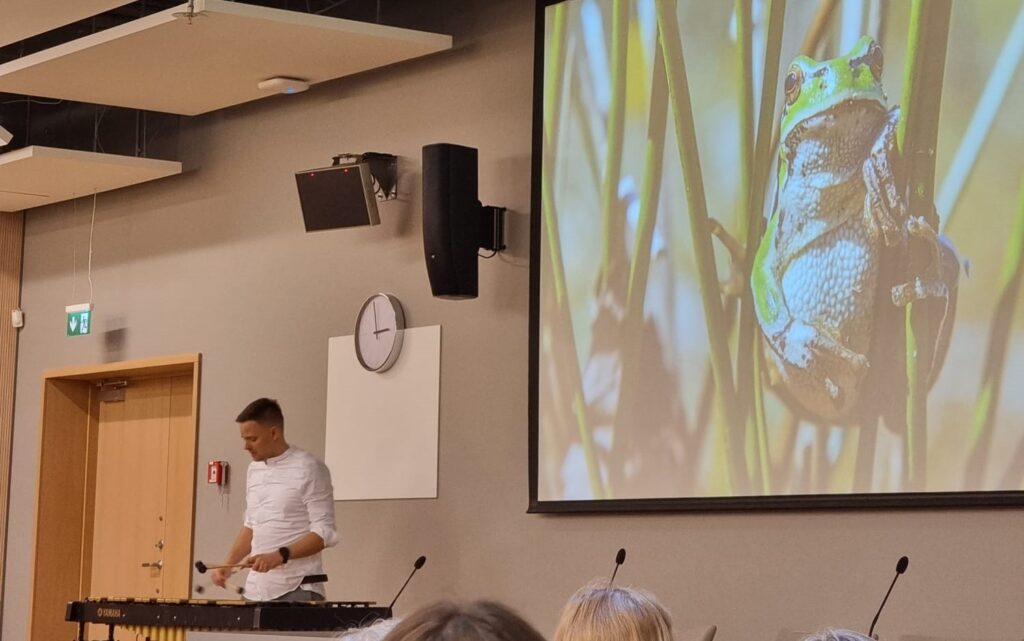
We would like to express our gratitude to every nature enthusiast who dedicated time to capture nature's values and diversity of species. We hope that the photo contest was a valuable encouragement to go out into nature and get to know the diversity of species in Latvia. Also, we would like to express our gratitude to the jury, who devoted their time and experience to evaluate more than 400 submitted photos.
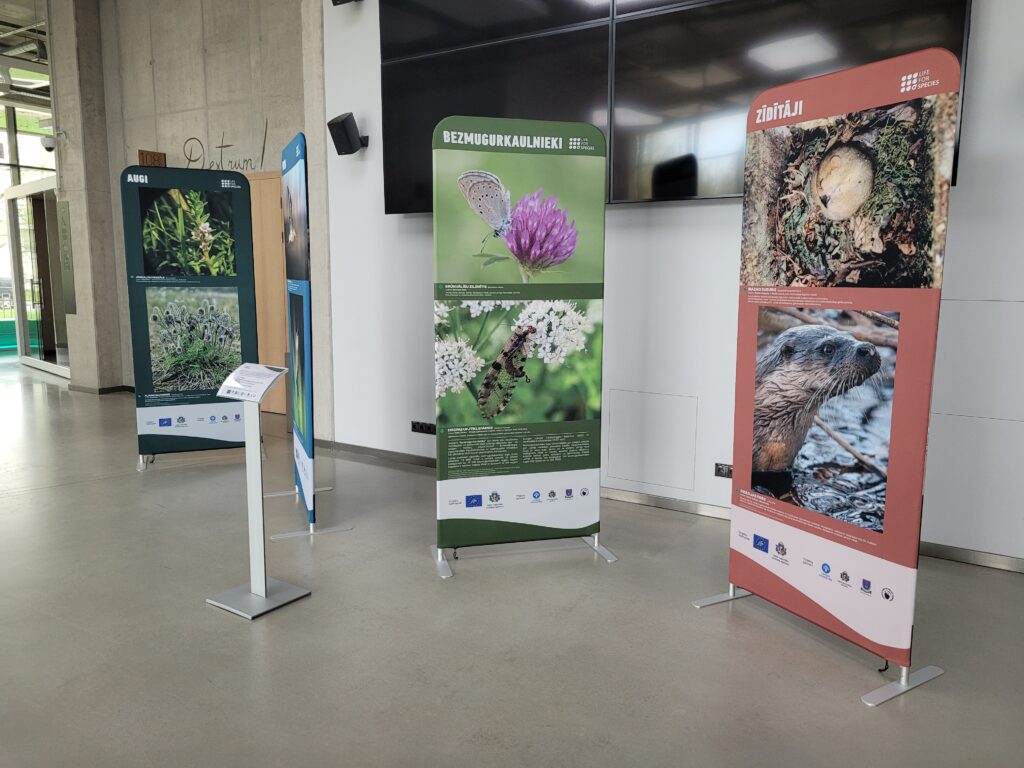
The visual design of the photo exhibition was created by Kristina Bondare.
Within the LIFE FOR SPECIES project (Endangered species in Latvia: improved knowledge and capacity, information circulation and understanding) in the period from 2021. until 2023 in April, an evaluation of the state of vascular plant species and determination of the risk level of species extinction was carried out using the methodology and criteria developed by the International Union for the Conservation of Nature and Natural Resources (IUCN, https://www.iucnredlist.org/, https://sarkanagramata.lu.lv/par -project/materials/). The activities were carried out within the project B.1 activity "Re-evaluation of the status of species protection and preparation of the list of endangered species using IUCN criteria".
In order to present the preliminary results of species evaluations to those interested, a meeting will be organized on May 19 (on Zoom).
It will consist of:
Estimated meeting length: approximately 2 hours.
To participate in the meeting, please fill out the application by May 17: https://forms.gle/wHmzd3iLtNFxMYDS6
A link to the meeting will be sent to the email you provided before the meeting.
A total of 345 species of vascular plants were evaluated in the project. The results with the assigned preliminary categories are available here: Vaskularo augu izvertejumi apspriedem_LV_2023
We invite anyone who is interested in participating, to read the assessments and send comments and questions before the meeting by writing to the email provided below:
On April 27 of this year, the mid-term seminar of the LIFE FOR SPECIES project was successfully held in the Latvian University. During the seminar, the project team introduced the interested parties present with the work done in the project so far and the future activities. More than 70 participants attended the event.
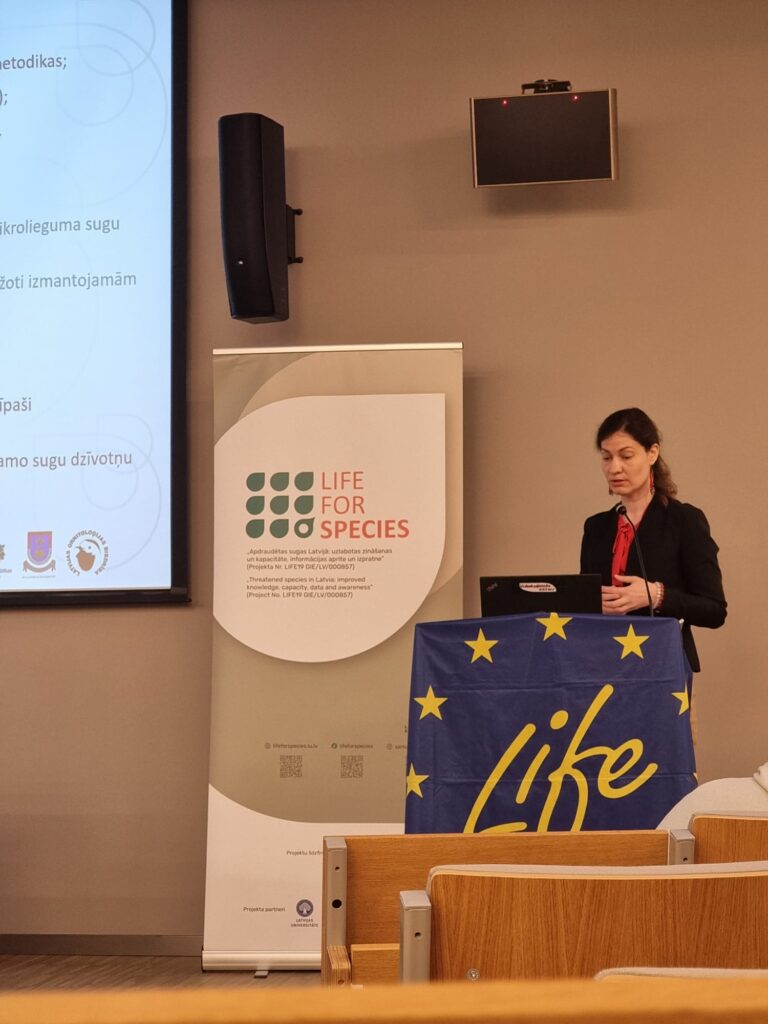
Attendees of the mid-term seminar also had the opportunity to listen to several lectures on the results of the risk assessment of various groups of species, as well as to ask the experts the questions they were interested in.
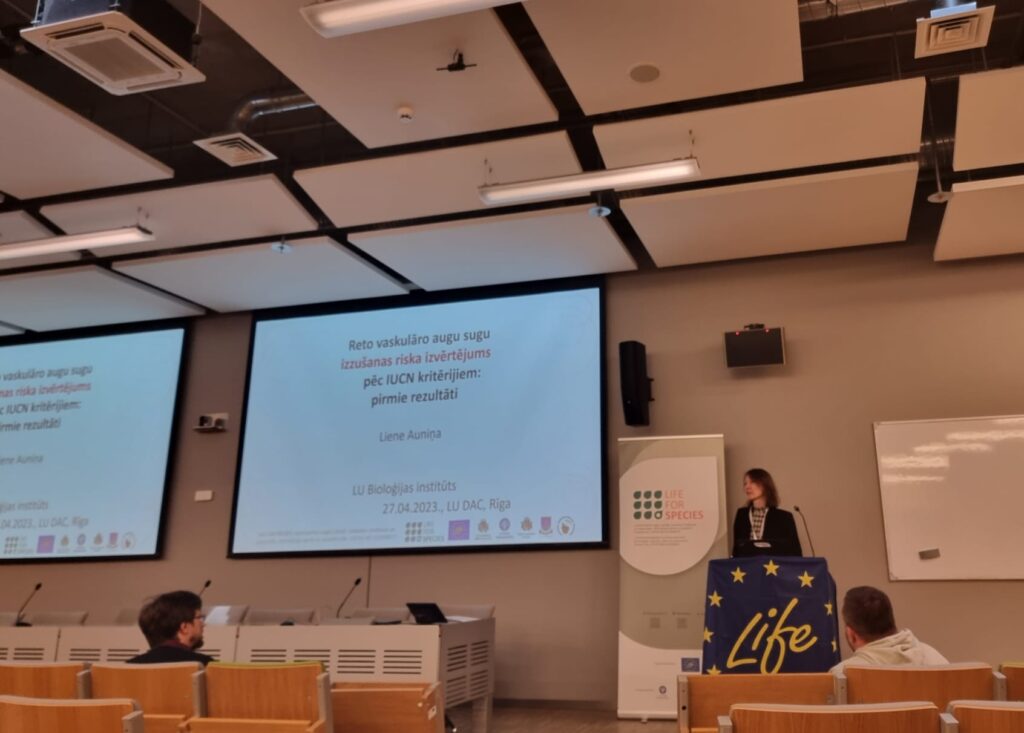
Also, another important moment for the project was noted during the seminar - the project brochure was unveiled. In order to fully inform the public about the danger of the species and how to get involved in the protection of the species, the brochure became much broader than originally planned. After the mid-term seminar, the brochure in printed form is freely available to anyone interested both in paper and electronic formats.

At the end of the seminar, the ceremonial opening of the traveling photo exhibition "Green Treasures" and awarding of the authors of the best photographs took place.
Within the LIFE FOR SPECIES project (Endangered species in Latvia: improved knowledge and capacity, information circulation and understanding) in the period from 2021. until 2023 in April, an evaluation of the state of amphibian and reptile species and determination of the risk level of species extinction was carried out using the methodology and criteria developed by the International Union for the Conservation of Nature and Natural Resources (IUCN, https://www.iucnredlist.org/, https://sarkanagramata.lu.lv/par -project/materials/). The activities were carried out within the project B.1 activity "Re-evaluation of the status of species protection and preparation of the list of endangered species using IUCN criteria".
In order to present the preliminary results of species evaluations to those interested, a meeting will be organized this on May 16 at 10:00 (on Zoom).
It will consist of:
Estimated meeting length: approximately 2 hours.
To participate in the meeting, please fill out the application by May 12: https://forms.gle/GNj7kZJ64QFWncte8
A link to the meeting will be sent to the email you provided before the meeting.
A total of 21 species of amphibians and reptiles were evaluated in the project. The results and the list of evaluated species with assigned preliminary categories are available here:
Abinieki_rapuli_IUCN_apspriedem LV (password: IUCN-2023)
Of these, 10 taxa have been evaluated as LC (least concern or safe) in Latvia.
We invite anyone who is interested in participating, to read the assessments and send comments and questions before the meeting by writing to the email provided below:
As we enjoy the first warm days and sunshine of spring, many species are beginning to wake up from hibernation. One of them is also the species of the month of April - European pond terrapin (Emys orbicularis).

Photo: João Manuel Lemos Lima
European pond terrapin is special for Latvia - it is the only species of turtle that can be found in our country, and unfortunately, it is very rare that we get to meet the species in nature. The oldest news about the finds of this species in Latvia can be traced back to the 19th century. Nowadays the species is mostly found in the nature park in the vicinity of Silene and Apgulde in Latvia.
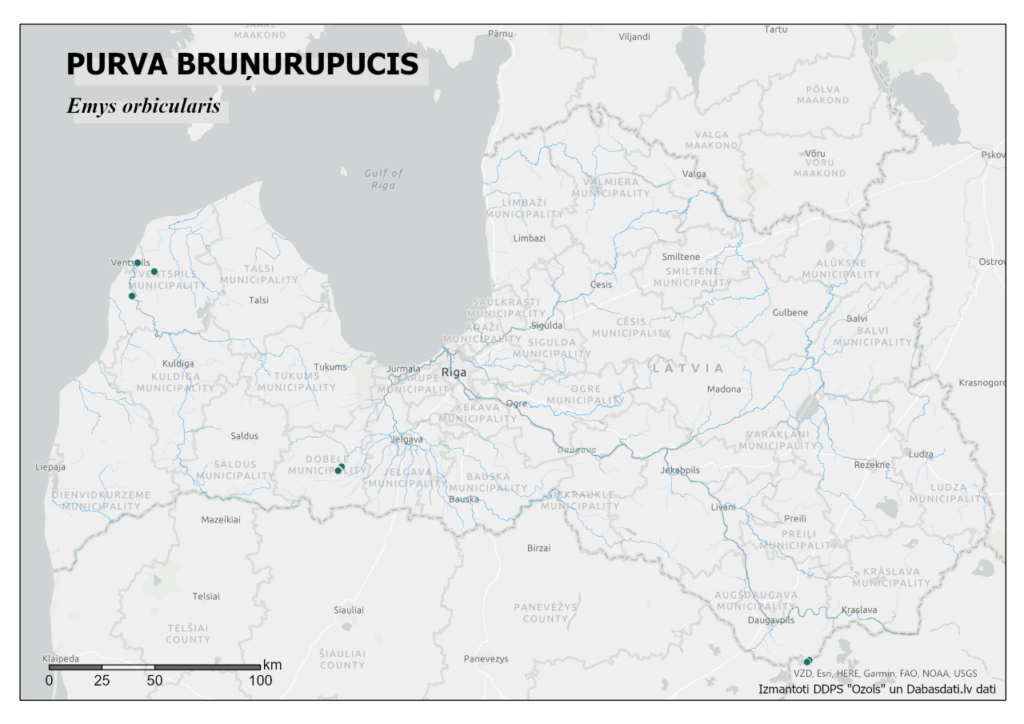
Map by Jānis Ukass
The Turtle's shell reaches a length of about 20 cm and its color on the surface varies from dark brown to black with light yellowish spots. The lower part of the shell can be both light and dark, with darker spots. The turtles head, neck and legs are also dark in color with yellow flecks.
The turtle is constantly in or near water, although females tend to travel further over land to find dry, sunlit egg-laying sites. The female lays 4 - 15 eggs in May, which develop until late summer and early autumn. The eggs are buried in a hole up to 10 cm deep.
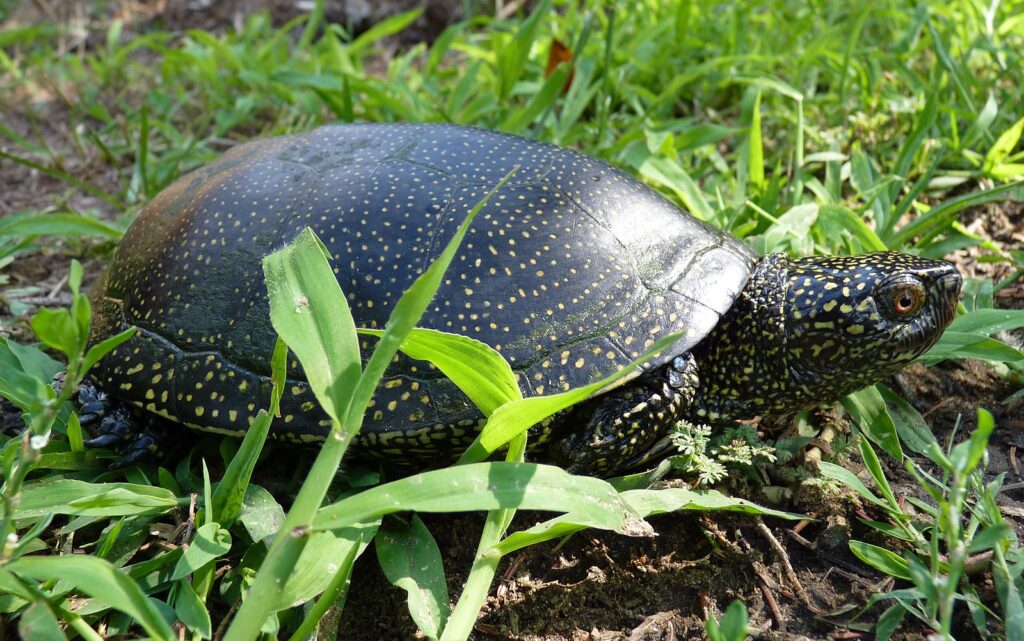
Photo: Dudva
Unfortunately, the species is characterized by very high mortality of eggs and young individuals, however, this is compensated by very low mortality of adults. Life expectancy is also significantly high - 50 and even more years.
The terrapin is an omnivore and daily feeds on various aquatic invertebrates, the remains of other animals and sometimes plant food. It mostly lives in small bodies of water with sunlit shores, and during the day it often basks on plant crowns or tree trunks. The terrapin swims well, dives and can stay underwater for a long time. The species hibernates at the bottom of water bodies, in mud.
Sources:
Within the LIFE FOR SPECIES project (Endangered species in Latvia: improved knowledge and capacity, information circulation and understanding) in the period from 2021. until 2023 in April, an evaluation of the state of fungi species and determination of the risk level of species extinction was carried out using the methodology and criteria developed by the International Union for the Conservation of Nature and Natural Resources (IUCN, https://www.iucnredlist.org/, https://sarkanagramata.lu.lv/par -project/materials/). The activities were carried out within the project B.1 activity "Re-evaluation of the status of species protection and preparation of the list of endangered species using IUCN criteria".
In order to introduce interested parties to the preliminary results of fungi species evaluations, a meeting will be organized this year on April 28 at 13:00 (on Zoom).
Estimated meeting length: approximately 2 hours.
To participate in the meeting, please fill out the application by April 25: https://forms.gle/zQHunakRRLnHXJAU7
A link to the meeting will be sent to the email you provided before the meeting.
140 mushroom species were selected and evaluated in the project. The results are available here.
We invite anyone who is interested in participating, to read the assessments and send comments and questions before the meeting by writing to the email provided below:
Within the LIFE FOR SPECIES project (Endangered species in Latvia: improved knowledge and capacity, information circulation and understanding) in the period from 2021. until 2023 in April, an evaluation of the state of mammal species and determination of the risk level of species extinction was carried out using the methodology and criteria developed by the International Union for the Conservation of Nature and Natural Resources (IUCN, https://www.iucnredlist.org/, https://sarkanagramata.lu.lv/par -project/materials/). The activities were carried out within the project B.1 activity "Re-evaluation of the status of species protection and preparation of the list of endangered species using IUCN criteria".
In order to introduce the interested parties to the preliminary results of the evaluation of mammal species, a meeting will be organized on April 28 at 10:00 (on Zoom).
It will consist of:
Estimated meeting length: approximately 2 hours.
To participate in the meeting, please fill out the application by April 25: https://forms.gle/p3rGEQEes7aNgM2H8
A link to the meeting will be sent to the email you provided before the meeting.
39 mammal species were selected and evaluated in the project. The results are available here: Ziditaji_izvertejumi apspriedem LV_2023
We invite anyone who is interested in participating, to read the assessments and send comments and questions before the meeting by writing to the email provided below:
On April 27 of this year, at 10:00, we invite everyone interested to the mid-term seminar of the LIFE for Species project. The event will take place in the UL Academic Centre, Magnum Auditorium, Jelgavas Street 1, Riga.
In order to participate in the seminar, it is necessary to register your participation by filling out the registration form by April 24.
The ceremonial opening of the traveling photo exhibition "Green Treasures" and the awarding of the authors of the best photographs will also take place during the seminar.
The agenda for this event is available here.
The aims of the LIFE FOR SPECIES project are to update the list of protected and endangered species based on scientific criteria, to prepare proposals for changes in legislation, to improve data quality and availability of species, as well as to increase public and stakeholder awareness, and active species protection in Latvia.